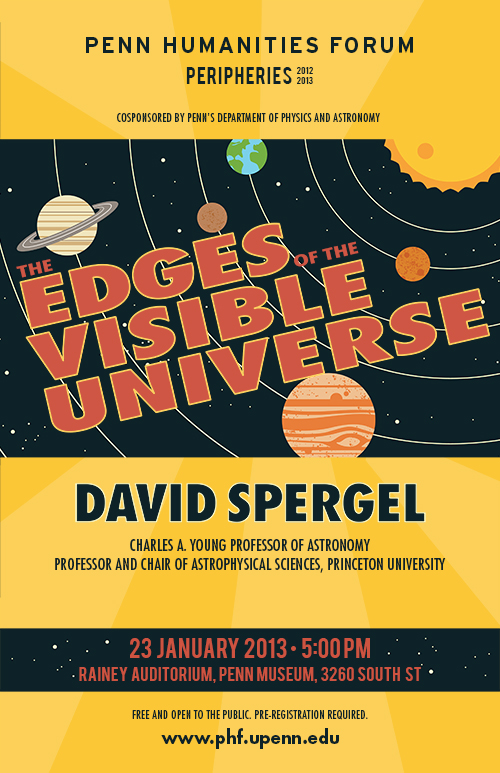Because light travels at a finite speed, cosmologists observing the farthest peripheries of visible space are also looking backwards in time, seeing the universe in its earliest moments after the Big Bang. These observations enable them to tackle the most daunting questions that drive modern cosmology. What is the universe made of? What existed before the Big Bang? And, given the vast scales and durations at issue, what difference does the fact of human life make? MacArthur Award-winning astrophysicist David Spergel shares his latest thinking on these matters.
David Spergel is best known for his work as a member of the science team for NASA's Wilkinson Microwave Anisotrophy Probe (WMAP) mission, which maps the cosmic microwave background radiation of the universe. Spergel used WMAP data to determine the age of the universe, the density of matter in the universe, and how it fluctuated to form the first galaxies. His published papers on those subjects have been referenced by other scientists more than any other physics research in the new millennium.
He is currently part of a team of scientists and engineers at Princeton who are developing new technologies that could one day enable the direct imaging of earth-like planets.
Spergel received his Ph.D. from Harvard University and joined the Princeton faculty in 1987. He is a member of the National Academy of Sciences and, in addition to the MacArthur Fellowship, has been awarded the Shaw Prize, a Sloan Fellowship, and the Presidential Young Investigator award. In 2001, TIME Magazine listed Spergel as one of America's top scientists.
Charles A. Young Professor of Astronomy
Professor and Chair of Astrophysical Sciences
Princeton University



